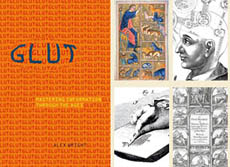Sutrayana Seminary
February 23, 2007
I spent the last month up in frosty Barnet, Vermont, attending the 2007 Sutrayana Seminary at Karmê Chöling. One week later, the memories are already fading, so I thought I would jot down a few recollections while I can still cobble them together.
 Seminary is like a cross between a meditation retreat, grad school, and an inpatient methadone clinic. The schedule is demanding - running from 7:00am to 9:00pm, 7 days a week - but also quite relaxing in a way, insofar as you're temporarily liberated from the usual distractions of everyday life. You don't have to worry about what's for dinner, or what to do with your free time (there isn't any); all you really have to worry about is your own state of mind - which is of course the biggest distraction of all.
You are also bottled up in a big farmhouse with 63 other people, with all your neuroses on full display. The whole situation can be alternately exhilarating and exasperating, and I wouldn't have missed it.
Seminary is like a cross between a meditation retreat, grad school, and an inpatient methadone clinic. The schedule is demanding - running from 7:00am to 9:00pm, 7 days a week - but also quite relaxing in a way, insofar as you're temporarily liberated from the usual distractions of everyday life. You don't have to worry about what's for dinner, or what to do with your free time (there isn't any); all you really have to worry about is your own state of mind - which is of course the biggest distraction of all.
You are also bottled up in a big farmhouse with 63 other people, with all your neuroses on full display. The whole situation can be alternately exhilarating and exasperating, and I wouldn't have missed it.
The program is divided into two two-week sections (with an open day in the middle). Part one focuses on the hinayana teachings, the traditional Buddhist path of individual liberation; part two focuses on the mahayana teachings on emptiness and compassion. The program has a steady rhythm to it, alternating between long stretches of sitting meditation practice and periods of intense study. There are also daily bouts of physical activity (Qi Gong, yoga stretching, or just walking outside) to keep your body from atrophying amid all the mental gymnastics.
The Gateway Exam
 The program opens with the Gateway Exam, modeled on the oral test that novice monks used to take upon entering a monastic shedra (or Buddhist university). Traditionally, the head teacher would meet would-be initiates at the gate, and ask them a series of questions to gauge whether they were monastic material. The contemporary version may be less intimidating - no one actually fails, as far as I know - but it's plenty nerve-wracking nonetheless.
The program opens with the Gateway Exam, modeled on the oral test that novice monks used to take upon entering a monastic shedra (or Buddhist university). Traditionally, the head teacher would meet would-be initiates at the gate, and ask them a series of questions to gauge whether they were monastic material. The contemporary version may be less intimidating - no one actually fails, as far as I know - but it's plenty nerve-wracking nonetheless.
Before the Seminary, you have to plough through a long reading list (consisting mostly of transcripts from previous seminaries), and prepare to answer any one of 50-odd questions on a range of Buddhist teachings. On exam day, the teacher picks a question for you, then you have to wing it out loud in front of the teacher and an assembled group of 10-15 students. Although the form is largely ceremonial, nonetheless it makes for a surprisingly white-knuckle situation. I imagine it feels something like being asked to defend your thesis. Lest anyone rest too easy after the initial exam, they hold two more oral exams during the program - one at the midway point, and another at the end (in the final exam, the students actually examine each other, while the teacher sits and observes). It's not quite as sadistic as it sounds: There are no grades, there's no passing and failing, yet somehow the whole exam process does a remarkable job of keeping everyone engaged.
After the first exam, everyone settles in to a three-day practice intensive modeled after a dathun, with about 9 hours of sitting per day, oryoki meals, and a dokusan-style interview with one of the instructors. As Seminary goes on, they introduce sporadic day-long intensives to break up the schedule, as well as an additional three-day practice intensive at the midpoint of the program. The practice periods provide a nice counterbalance to the study periods, allowing everyone to stew a little bit and digest whatever they may have learned so far.
The classes
 Although Seminary involves a good chunk of sitting meditation, the main focus is on the classes themselves. The program consists of three classes running concurrently: a keynote class led by Acharya John Rockwell, a so-called "View class" led by senior teacher Benoît Côté, and a course on the Shambhala teachings led by Acharya Arawana Hayashi.
Although Seminary involves a good chunk of sitting meditation, the main focus is on the classes themselves. The program consists of three classes running concurrently: a keynote class led by Acharya John Rockwell, a so-called "View class" led by senior teacher Benoît Côté, and a course on the Shambhala teachings led by Acharya Arawana Hayashi.
Acharya John Rockwell
Acharya Rockwell is a sphynx. He's wry and inscrutable, and always seems to know more than he's letting on. He also has an encyclopedic command of the dharma (not to mention he's fluent in Tibetan), and a disarming sense of humor that cuts through any hint of religiosity. He also has this kind of chaotic energy about him that always keeps you slightly off kilter, seeming to echo the "crazy wisdom" style of his own root teacher, the legendary (and often shocking) Chögyam Trungpa Rinpoche.
Acharya Rockwell's course served as the Seminary's intellectual foundation, setting a theme and, at least as importantly, an atmosphere around which the the rest of the program pivoted. The first half of his class focused on the four noble truths. This is the most basic set of teachings in Buddhism, and it is the one thing that most non-Buddhists have probably heard of; indeed, it is so familiar that a lot of students (myself included) tend to gloss right over it. But as Acharya Rockwell went to great lengths to explain, the whole path is actually contained in this teaching. So just to recap, the four noble truths are:
- The truth of suffering
The word "suffering" has always struck me as a bit of a downer. Suffering sounds like pestilence, famine, and warfare - you know, things that happen to other people. Most people I know are leading lives that seem mostly, you know, ok. I wonder how many of us really think of ourselves as "suffering"? But one could also translate the original Sanskrit word "dhukka" as "dissatisfaction," which I think gets closer to the point: Everyone is, at some level, just kind of generally dissatisfied. - The origin of suffering
We are dissatisfied because, well, we want things. And often we don't get them. But even when we do get what we want, we usually discover that getting what we wanted never turns out to be quite as satisfying as we thought it was going to be. And so we start wanting something else. And so it goes. - The cessation of suffering
There's hope. The good news is that suffering can be eliminated. All we have to do is eliminate attachment. - The path
To overcome attachment, we just need to, as it were, straighten up and fly right. Traditionally, this involves the "eightfold path" of cultivating worthwhile views, intentions, speech, action, livelihood, effort, mindfulness and concentration. But memorizing the eightfold path is not particularly the point. The point, I think, is to start examining one's unexamined tendencies, and start learning to let go.
As the Seminary moved into the mahayana phase, Acharya Rockwell's course took on a more experiential direction, as we began to incorporate Vipassana (or awareness meditation) practices. The idea is to broaden one's focus beyond the sphere of the individual self, to tune into the environment and begin dissolving one's sense of personal solidity, and by recognizing the fluidity of our experience, to develop a more open mind and heart. This is the foundation of cultivating compassion for others; by recognizing the illusory nature of one's "self," one can gradually begin to cheer up.
Benoît Côté
 Monsieur Côté is a punctilious teacher, who presents material in a precise, rigorous scholarly style. At the time, I found some of his presentations a bit dry and overly text-centric, but looking back, I'm impressed by the sheer depth of material he was able to convey. His class was by far the most intellectually rich component of the Seminary.
Monsieur Côté is a punctilious teacher, who presents material in a precise, rigorous scholarly style. At the time, I found some of his presentations a bit dry and overly text-centric, but looking back, I'm impressed by the sheer depth of material he was able to convey. His class was by far the most intellectually rich component of the Seminary.
M. Côté's class delved into the heritage of Buddhist schools of thought, starting with the major Hinayana schools (Vaibashakas and Sautrantikas), then moving into the Mahayana schools (Cittamattrans and Madhyamakans) and various sub-schools within each, finally working our way to the Shentong school of the Madhyamaka tradition, which is the foundation for the Kagyu lineage of Tibetan Buddhism that Shambhala embraces. Along the way, we delved into the teachings on the five skandhas and the nature of perception, the Heart Sutra, and the wide range of Buddhist views on appearance and emptiness. It's probably not worth going into too many hairy details here - for an excellent overview of the different schools, try Khenpo Tsultrim Gyamtso's The Two Truths - but suffice it to say each school has a unique perspective on the fundamental texture of human experience. In typical Buddhist fashion, one is not looking for the "right" school - but rather trying to appreciate the unique contribution and truth of each tradition.
Acharya Arawana Hayashi
 Acharya Hayashi teaches with a remarkable kind of stage presence, drawing on her years of experience as a dancer and choreographer. While she knows her material inside out, what really stayed with me were largely physical impressions: her ability to illustrate a point with a well-timed gesture, a posture, or her way of challenging participants to engage with each other through non-verbal communication exercises. Somehow she seems to embody the dharma in a way that I can't quite explain.
Acharya Hayashi teaches with a remarkable kind of stage presence, drawing on her years of experience as a dancer and choreographer. While she knows her material inside out, what really stayed with me were largely physical impressions: her ability to illustrate a point with a well-timed gesture, a posture, or her way of challenging participants to engage with each other through non-verbal communication exercises. Somehow she seems to embody the dharma in a way that I can't quite explain.
Acharya Hayashi's class covered the Shambhala teachings, the unique heritage of Shambhala Buddhism. While most Buddhist teachings are ultimately focused on individual enlightenment, the Shambhala teachings deal with how to create enlightened society. They are, as Acharya Hayashi put it, "weapons of mass enlightenment." According to the teachings, we are living at the beginning of a Dark Age, in which the forces of materialism and aggression are threatening to drag civilization into an age of deterioration and desperation. It is said that this is an age when people will give in to their basest impulses, dressing sloppily, eating bad cheap food, and creating "cocoons" to seal themselves off from the world. These could be cocoons of entertainment, food, drugs, Internet surfing, or just self-centered states of mind - basically, anything that enables us to wall ourselves off from each other. Creating enlightened society is not so much about going out and becoming insufferable do-gooders, however; rather, it's about learning to open up to each other, and to live together in a dignified way.
Moving on
 For all the formal teaching situations, in the end I think I probably learned at least as much from the other participants as I did from all the classes and exams. Such a pressure-cooker living situation amplifies your experience of everyday rituals like eating, talking, and working together. It's like living in your own little reality show. And while everyone may be a quote-unquote Buddhist, this is not to say that everyone sits around beaming beatific rays of joy and sunshine at each other. It gets testy sometimes. But you have no choice but to work with the whole situation, and to accept that all your interactions - for better and worse - get included in the practice. That said, for the most part I really enjoyed the other participants, who turned out to be a remarkably diverse bunch: nuclear engineers and car mechanics, college professors and street mimes, retired lawyers, psychotherapists, post-college drifters, dharma bums and all kinds of people who seemed to defy easy categorization. Somehow circumstances - or karma, if you must - threw us together under the same roof for a month. It was, as they say, an auspicious coincidence.
For all the formal teaching situations, in the end I think I probably learned at least as much from the other participants as I did from all the classes and exams. Such a pressure-cooker living situation amplifies your experience of everyday rituals like eating, talking, and working together. It's like living in your own little reality show. And while everyone may be a quote-unquote Buddhist, this is not to say that everyone sits around beaming beatific rays of joy and sunshine at each other. It gets testy sometimes. But you have no choice but to work with the whole situation, and to accept that all your interactions - for better and worse - get included in the practice. That said, for the most part I really enjoyed the other participants, who turned out to be a remarkably diverse bunch: nuclear engineers and car mechanics, college professors and street mimes, retired lawyers, psychotherapists, post-college drifters, dharma bums and all kinds of people who seemed to defy easy categorization. Somehow circumstances - or karma, if you must - threw us together under the same roof for a month. It was, as they say, an auspicious coincidence.
One month later, how do I feel? A little wiser, and a little more confused. Am I any closer to enlightenment? I have no idea. In fact, I'm not sure I have the faintest notion of what enlightenment really is. Which seems like a good place to start.
File under: Dharma
_____________________« Seminary | Left-wing widgetry »
GLUT:
Mastering Information Through the Ages
New Paperback Edition
“A penetrating and highly entertaining meditation on the information age and its historical roots.”
—Los Angeles Times
